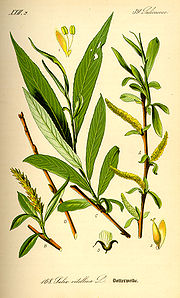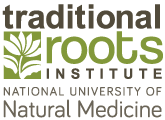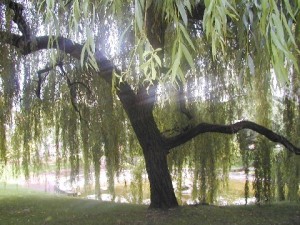Willow is a distinctive tree that many people recognize, and many more are drawn to.
Willow’s story offers many examples of the power of tree medicines, and the difference between living plant medicines and pharmaceuticals or isolated extracts.
There are over 400 species of Willow, growing all through the Northern Hemisphere. In botanical medicine, White Willow (Salix alba) is most commonly referenced, although other species like Black Willow (Salix nigra) and Crack Willow (Salix fragilis) can be used interchangeably in many cases.
Willow has a long history of medicinal use. Indeed, I first learned about willow at age 12, when I did a science fair project on what was then referred to as “alternative medicine”. Willow was – for me – a gateway plant to the world of plant medicines. Perhaps it has played this role for you as well, or perhaps it still may!
Experience & History
There is a calm elegance to willows. Their comforting, flowing grace draws us to sit beneath them and share their ease. They prefer damp areas, often growing along river banks or lakes’ edges. The notion of flow is reflected in their form and in the water beside them. Willow’s historical use for rheumatism, a condition worse with dampness, mirrors its habitat of choice as well as its chemical action.
The flexible branches have long been used in making baskets, as well as wicker furniture. Elsewhere, willow wood is used for clogs, and for cricket bats.
Phytochemistry
 Willow bark contains salicin, the precursor to salicylic acid. When we ingest willow tea or tincture, we convert salicin to salicylic acid in out digestive tract. From salicylic acid you can manufacture acetyl salicylic acid, or ASA, the active ingredient in Aspirin. Willow bark is in fact one of the plants from which Aspirin was originally made! It follows, then that like ASA, salicin has an anti-inflammatory effect in our body, making willow an excellent medicine for muscular and joint pains, fever pains, and gout.
Willow bark contains salicin, the precursor to salicylic acid. When we ingest willow tea or tincture, we convert salicin to salicylic acid in out digestive tract. From salicylic acid you can manufacture acetyl salicylic acid, or ASA, the active ingredient in Aspirin. Willow bark is in fact one of the plants from which Aspirin was originally made! It follows, then that like ASA, salicin has an anti-inflammatory effect in our body, making willow an excellent medicine for muscular and joint pains, fever pains, and gout.
Flower Essence
Willow flower essence helps us to find flexible strength. The essence is used for stiffness in body and mind, helping to address rigidity in thinking as well as in our muscles or joints. Willow helps people to let go, to accept, to forgive, to adapt. It addresses feelings of resentment or victimization. It supports the our feminine – or yin – nature.
From the FES flower essence repertory,
“Willow restores a more “spring-like” disposition, helping the soul to respond with greater resilience and inward mobility to challenges and problems. In this way, the Self takes more responsibility for its condition, and learns to flow more gently and graciously with rather than against the flow of life.”
Actions
Analgesic, anti-inflammatory, astringent, antipyretic
Indications
Arthritis, rheumatism, low back pain & other general muscular aches and pains, period pain, gout, fever, diarrhea
Preparation
Tincture or decoction of bark.
Cautions
Plants are not like drugs, and here is another example. You cannot use willow bark as a substitute for Aspirin if you are taking the drug for blood thinning. Willow does not thin the blood. And while Aspirin is notorious for causing stomach side effects (it increases ulceration & bleeding in the gut), white willow does not.
References:
Conway, Peter. Tree Medicine: A Comprehensive Guide to the Healing Power of Over 170 Trees. London, UK: Judy Piatkus Ltd. 2001.
Godfrey, Anthony & Saunders, Paul (with Kerry Barlow, Matt Gowan, Cyndi Gilbert, Rebecca Blok & Mahalia Freed). Principles and Practices of Naturopathic Botanical Medicine. Volume 1: Botanical Medicine Monographs. Toronto, ON: CCNM Press. 2012.
Hoffman, David. Medical Herbalism: The Science & Practice of Herbal Medicine. Rochester, VT: Healing Arts Press. 2003.
Kaminski, Patricia & Katz, Richard. Flower Essence Repertory. Nevada City, CA: Flower Essence Society. 1986/2004.





